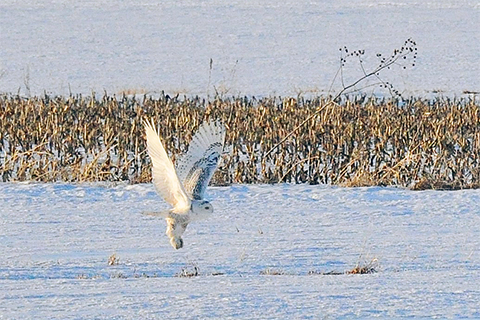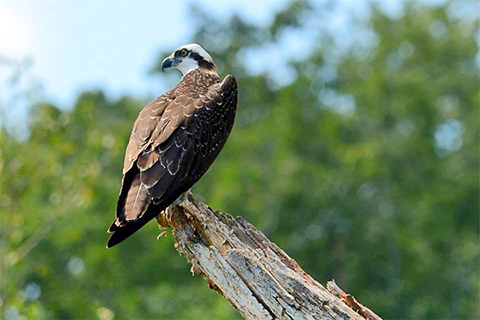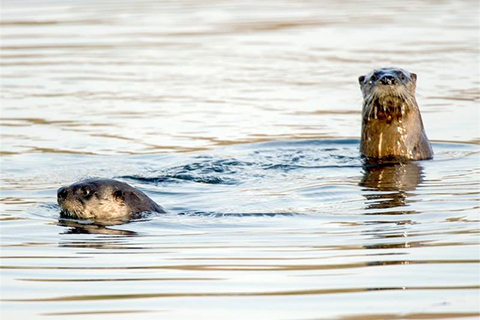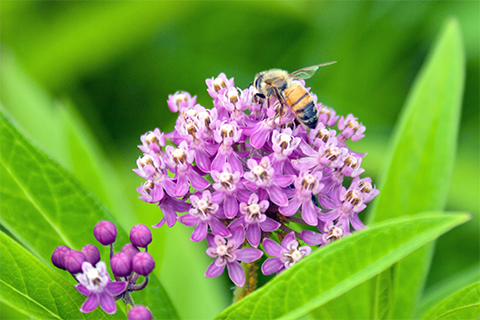This month, when you are outdoors in a natural place looking for signs of spring, you’ll see biodiversity -- it’s the variety of life that surrounds us, including all the earth’s plants, animals, their habitats, and the natural processes of which they are a part.
As climate change alters temperature and weather patterns, it also will impact plant and animal life.
Scientists expect the number and range of species, which define biodiversity, will decline as temperatures continue to rise.
Much of DCNR’s work focuses on the conservation of Pennsylvania’s biodiversity through program and land management goals.
DCNR manages lands to provide habitats that support diverse, healthy populations of wildlife.
The Wild Resource Conservation Program is among the ways DCNR works to conserve biodiversity.
Pennsylvania’s Wild Resource Conservation Program

Since it began in 1982, DCNR’s Wild Resource Conservation Program has affected considerable conservation progress.
The program primarily finances research and protection efforts for native, non-game, and wild plant species.
Funds from the program have:
- Supported the reintroduction of otters, osprey, peregrine falcons, and fishers to Pennsylvania
- Aided conservation and research of the eastern hellbender -- the State Amphibian
- Enabled research on species vulnerable to climate change
- Identified new plant and animal species
- Located rare plant populations within the state
- Researched habitat for migrating birds
- Provided educational materials to schools
Filling a Funding Void

A long-recognized issue with plant and animal conservation is the ongoing need for funding -- especially for non-game species.
The Wild Resource Conservation Program funding mechanisms address this by allowing for the purchase of the otter license plate, a tax check-off, and donations.
In recent years, funding for the Wild Resource Conservation Program has decreased; but as we work to make the state resilient to climate change, conservation funding is needed now more than ever.
How You Can Help Conserve Pennsylvania’s Biodiversity

There are three main ways that you can help support the Wild Resource Conservation Program.
You can purchase a river otter license plate from PennDOT, and $15 will go to the program.
Check the box to donate all or part of your state tax refund (don’t forget -- file by April 15!!) to the Wild Resource Conservation Program to help protect plants and non-game wildlife.
You also can contribute directly to the fund, which can be a good idea for memorial contributions or for birthdays instead of gifts.
Mail a check payable to:
Wild Resource Conservation Program
Bureau of Forestry
400 Market Street, 6th floor
Harrisburg, PA 17105-8552
Other Tips for Biodiversity Conservation

Save the Bees
Bees and other pollinators are important to preserving biodiversity, but their populations have been declining. You can help save them by planting nectar-producing wildflowers in your backyard and eliminating or using great care with pesticides.
Plant Local Flowers, Fruits, and Vegetables
Research what’s native to your area, and plant a variety in your backyard or a hanging garden. To aid in this effort, ask for native plants at the garden center and support local nurseries that specialize in native species.
Take Shorter Showers
Biodiversity depends on the abundance of local fresh water. Taking 5-minute showers and turning the water off while washing your hands, doing the dishes, or brushing your teeth are all easy ways to conserve water.
Respect Local Habitats
Plants growing in the parks and nature preserves near you often play an important role in preserving the local ecosystem. When you’re outdoors, protect local biodiversity by sticking to the walking path or hiking trail.
Pennsylvania’s Natural Heritage Program provides additional information about the diversity of species in the commonwealth.
Learn more about the Wild Resource Conservation Program at the DCNR website.